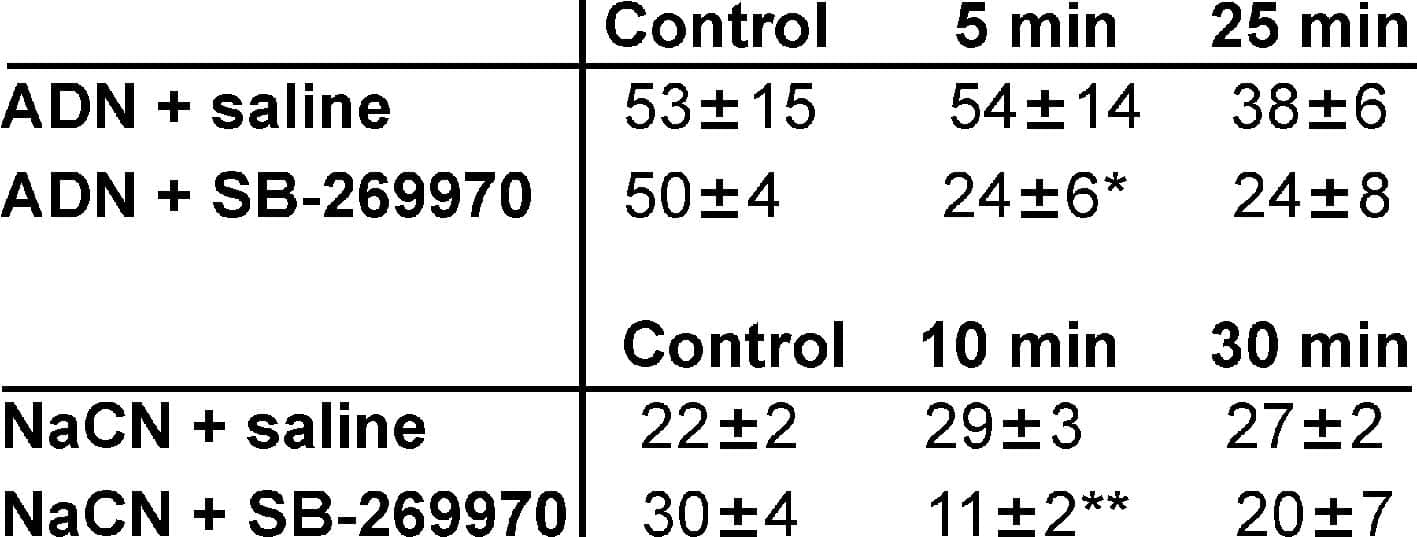Central 5-HT1A receptors play an important role in the control of vagal bradycardias evoked by vagal afferents (Xth nerve) but not chemoreceptor afferents (IXth nerve; Skinner et al. 2002). Recently 5-HT7 receptors have also been implicated in the control the vagal bradycardias evoked by vagal (cardiopulmonary) afferents (Kellett et al. 2003) using the selective 5-HT7 receptor antagonist SB-269970 (Hagan et al. 2000). The present experiments have investigated whether central 5-HT7 receptors are also involved in the vagal bradycardia evoked by baroreceptor and chemoreceptor reflexes.
Male Sprague-Dawley rats (300-350 g) were anaesthetised with α-chloralose (80 mg kg-1 I.V. and 15 mg kg-1 when required), atenolol pretreated (1 mg kg-1 I.V.), neuromuscularly blocked (α-bungarotoxin 150 µg kg-1 I.V.; Jones et al. 2002), mechanically ventilated, and instrumented to record BP, phrenic (PNA) and renal nerve activity (RNA), and ECG (R-R interval). Depth of anaesthesia was assessed by the stability of BP and HR following a noxious stimulus. Baroreceptor afferents were activated by stimulating an aortic depressor nerve (ADN; 5 s, 40 Hz, 0.1 ms, 0.1-1 mA). Chemoreceptor afferents were activated by NaCN (75-150 µg kg-1 I.V.). After 3 control reflexes, either SB-269970 (100 µg kg-1) or saline was given intracisternally (I.C.; 10 µl). Baroreflexes were repeated at 5, 15, 25 min, and chemoreflexes at 10, 20, 30 min. At the end of experiments animals were humanely killed with an overdose of pentobarbitone.
SB-269970 significantly attenuated both baro-and chemoreflex increases in R-R interval (Table 1), as well as the chemoreflex increase in RNA (42 ± 6 % of control). It had no effect on baseline BP, HR or RNA.The data indicate that central 5-HT7 receptors contribute to the activation of cardiac vagal preganglionic neurones by both IXth and Xth nerve afferents.
DOK is a BHF Ph.D student.

